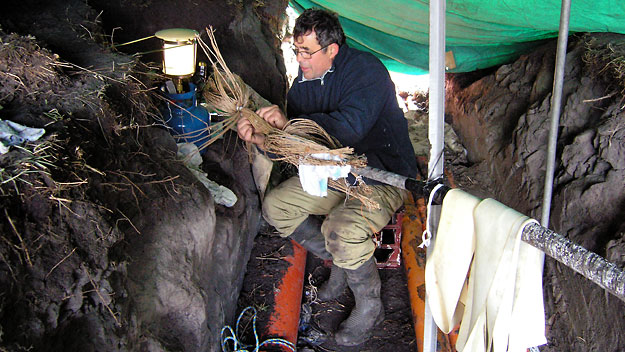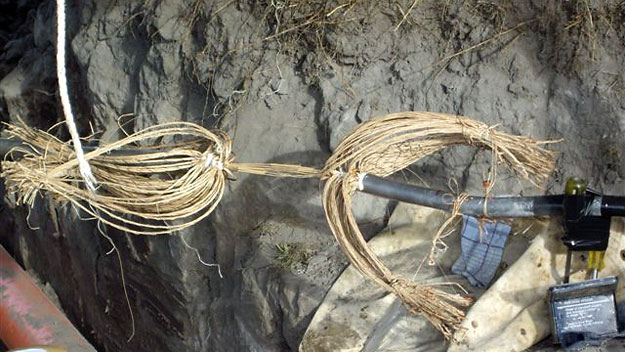
Many control cables around airports in use today were laid in the 1960s.
These cables are used to carry voice for telephones, intercoms, air-ground
communications and control and monitoring of airport navaids, runway &
taxiway lighting, fire alarms, weather information, flight data information
and many other data networks.
Pictured is a repair being conducted on a 200 pair (400 wires) lead-sheathed, paper-insulated cable at Hobart airport in June 2007. The Linesman is John Serban and the photo illustrates the difficult conditions under which Linesmen often have to work. The gas lantern is required for both lighting and heating as it is important that the paper insulation of the individual wires does not become damp.
The joining of paper-insulated, lead-sheathed cables is not an easy task. Each 200 pair join can take over two days to complete. The wires are identified by a colour code and are layered in a particular way: a common mistake when repairing these cables is to join pair number 1 to pair number 200 (i.e. 180 degrees out of phase). Each wire is individually joined together and covered by a paper sleeve. The photo below shows a close-up of the cable being spliced with some pairs having been joined and the remainder temporarily folded back out of the way.
Once the 200 pairs of wires are connected and tested, the lead sheath needs to be joined. In earlier times the joint would be wrapped in Kraft paper to hold it firm and protect it from heat. A piece of lead was cut to fit and rolled over the whole joint, then using a solder of 35% tin and 65% lead the seam was sealed and the ends were soldered to the cable sheath by using either an oxy or gas torch. This process is known as "lead wiping".
Due to Occupational Health & Safety problems with handling lead and fumes, this process has been replaced by joining the cable sheaths by a single wire (to provide electrical conductivity), covering the join with a heat shrink then a plastic shroud which can be covered in a sealing tape to ensure no moisture can enter the join.
Prior to paper insulation, the individual wires were insulated with silk and cotton. This cable technology has been replaced by plastic-insulated, plastic-sheathed cables.

(Photos: Shane Thomson)
Back to the main Communications & Navigation index
Back to the main Airports & Aerodromes index